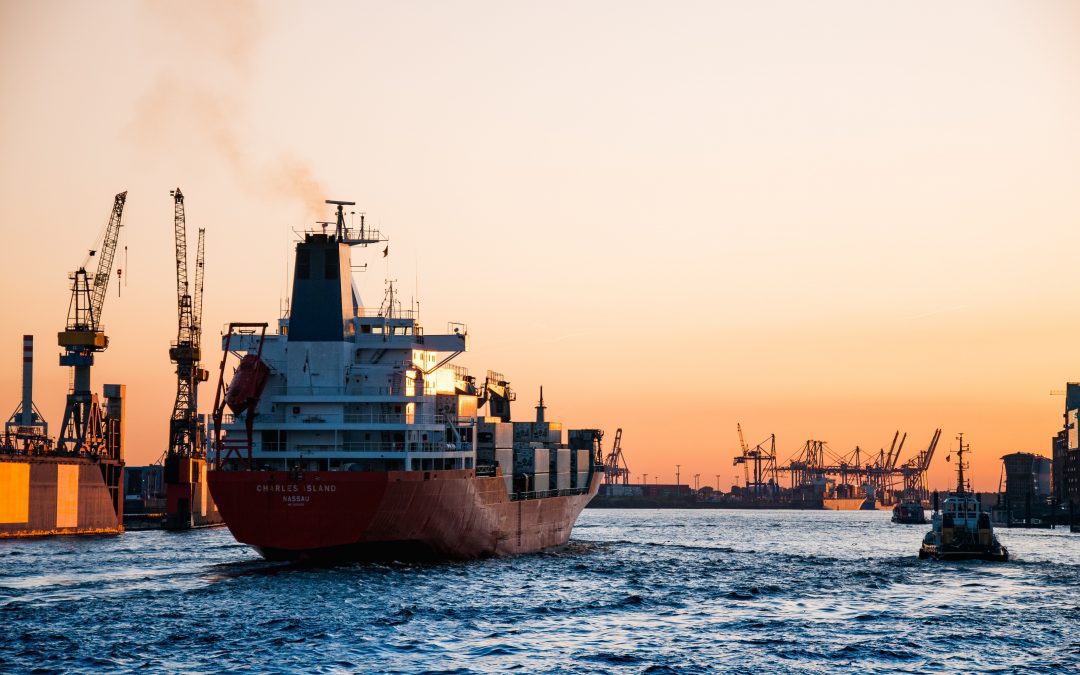Are you thinking of using sea freight services but want to weigh the pros and cons first? Learn more in our robust guide which covers all important aspects of sea freight.
What is sea freight?
Sea freight is cheaper than air freight and takes longer comparatively. But, if your delivery schedule isn’t time-critical, this option could save you money.
A sea freight service involves transporting large volumes of a product via a cargo ship, with the goods being stored into containers – prior to being loaded onto the vessel and sailed to the destination country.
Capacity will vary, depending on the size and type of vessel used. But a typical-sized ship can accommodate 18,000 containers, meaning it’s possible to transport goods in high quantities in a cost-efficient way.
Who uses sea freight services?
Customers who use sea freight services are predominantly businesses that buy stock in bulk from abroad, then import it at a much-reduced cost. Goods are most commonly bought from China – but no international location is off-limits.
How fast is sea freight?
It’s important to understand the logistics before committing to a sea freight service. The key point to understand is that time spent on the water – and how long it takes to deliver goods from door to door – will vary due to the process.
The importance of location
If you’re importing from China, it could take up to eight weeks to receive your goods. That’s because China’s landmass is almost as big as Europe and its locations are often spread out.
If you need to use a sea freight service to import stock from Australia, expect your goods to be on the water for anything up to 50 days. Should you really be thinking about an air freight service instead?
Goods go through customs first
It’s not just about how much time your goods will spend on the water. It’s about how long they’ll take to get processed. Your shipments will need to clear customs twice, which will add approximately two weeks to your shipment time. And that’s without taking into account any unforeseeable delays.
Air freight vs. sea freight
As indicated, sea freight services are by far the cheapest option. But this statement must be caveated – because the weight and size of your shipment will determine which method is the most economical.
Sea freight is the least expensive choice if you’re transporting goods totalling over 100kg, for example. But other factors will come into play too – such as how many cartons you’re buying and whether the agreement is on FOB terms.
And let’s not exclude couriers from the equation. A shipment that’s less than 100kg and 0.5 cm could be cheaper to transport using a courier service. Which AMCO can provide.
Your sea freight service provider will be able to find the cheapest and most efficient way to transport your goods, though. So this isn’t a decision you’ll need to make alone.
Are you familiar with Incoterms?
Incoterms have arguably the biggest effect on sea freight costs. Incoterms are a set of rules and responsibilities that all involved parties need to follow. Think of it as a form of universal language that anyone in the chain can follow and understand – so they know what to do, how, and when.
Here are some examples of Incoterms and their meanings:
- CIF – Cost, Insurance, and Freight. You will be responsible for any cost until your goods reach their destination, at which point the buyer becomes liable.
- FOB – Free On Board (FOB). In this case, responsibility is shared between buyer and seller with the ratio being almost even.
Free Carrier (FCA). The seller must deliver the goods to a specified location where the carrier operates. - DDP – Delivery Duty Paid. The buyer assumes responsibility for everything, including customs, delivery, taxes, and door-to-door transport.
- DAT – Delivered At Terminal. It is the seller’s responsibility to get the shipment to a specified port and unload the goods.
Depending on the terms you agree to operate under, your sea freight service provider will tailor your rates to include or exclude certain costs.
The two types of sea freight rates:
- LCL stands for Less-Than-Container-Load. It is used in cases where a shipment is too small to fit into a whole container. Instead, items are loaded into a shared container. Costs are then charged by the cubic metre.
- FCL stands for Full Container Load. It is used in scenarios where goods are of sufficient enough volume to be transported in their own dedicated container. A flat fee is then charged for the shipment.
Want to find out more?
Then contact an expert member of our team, so we can find the most cost-efficient and effective way of transporting your shipment.

